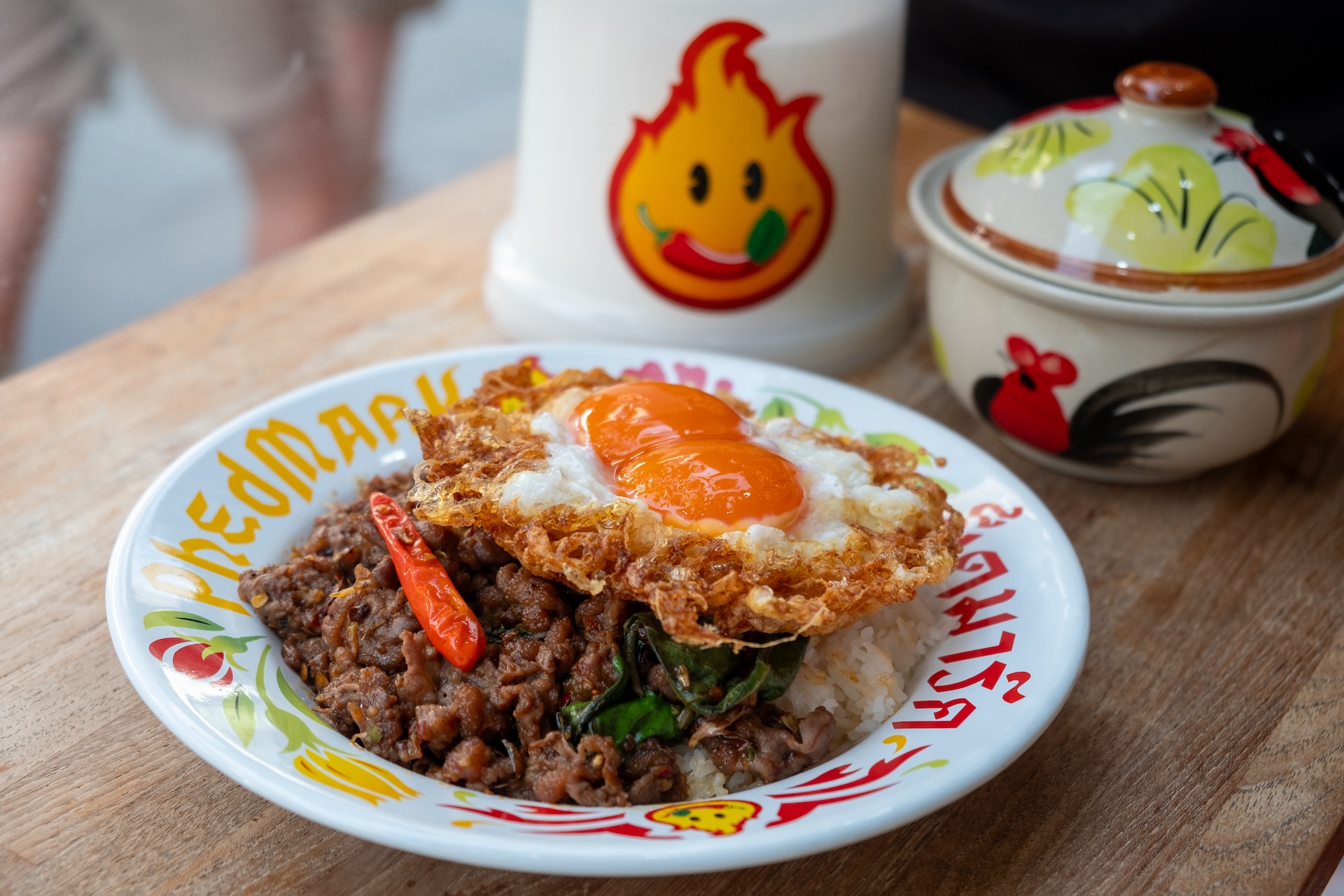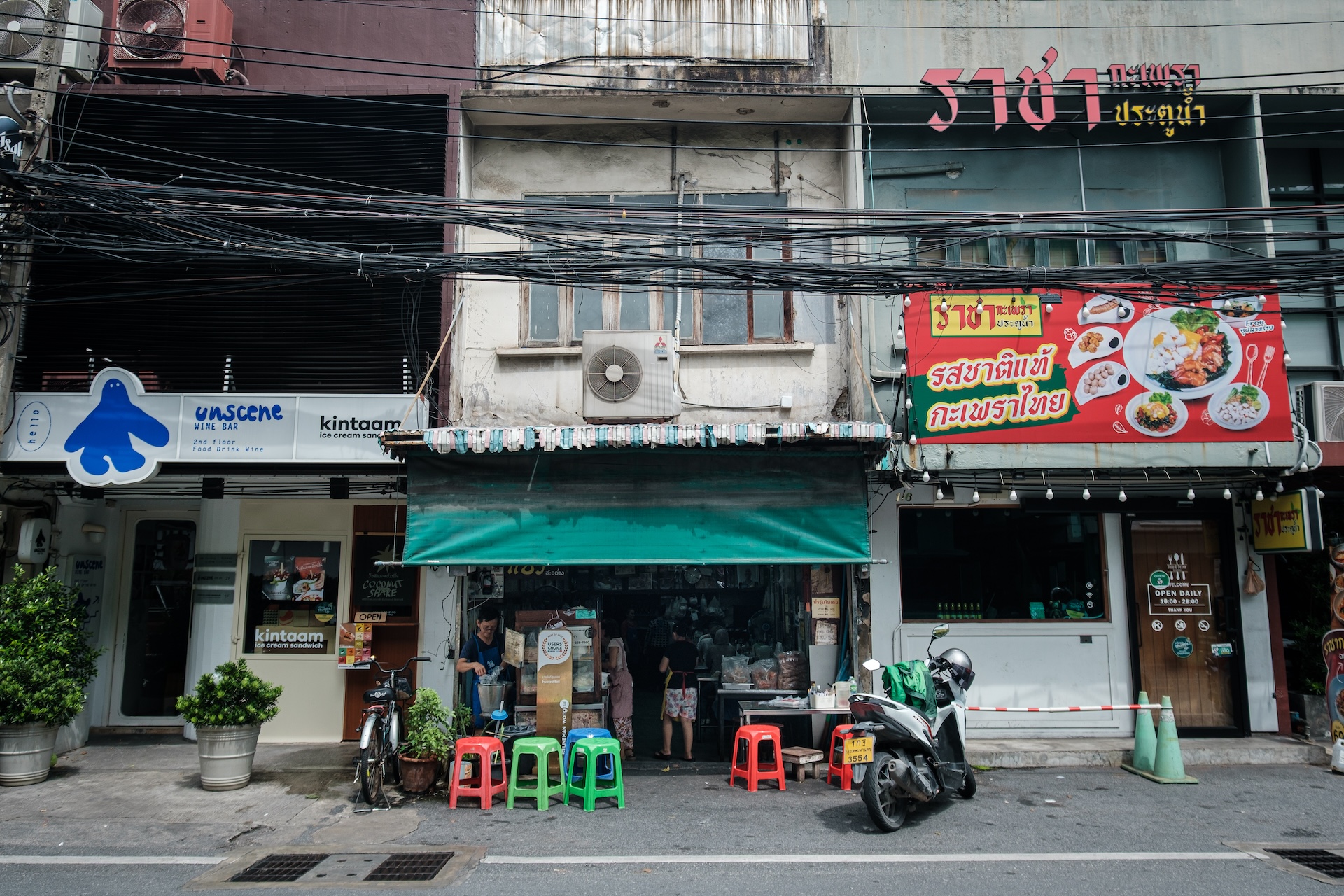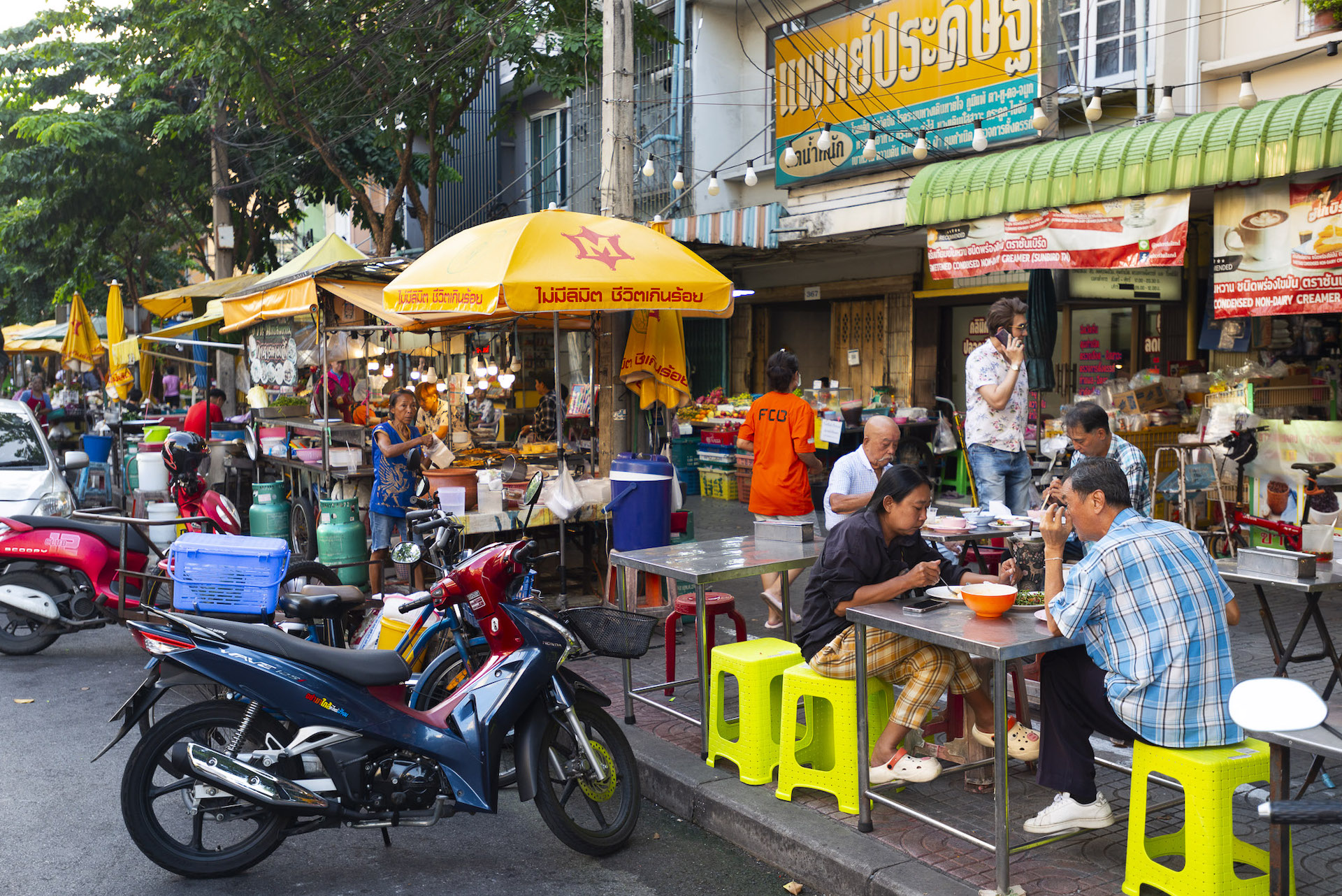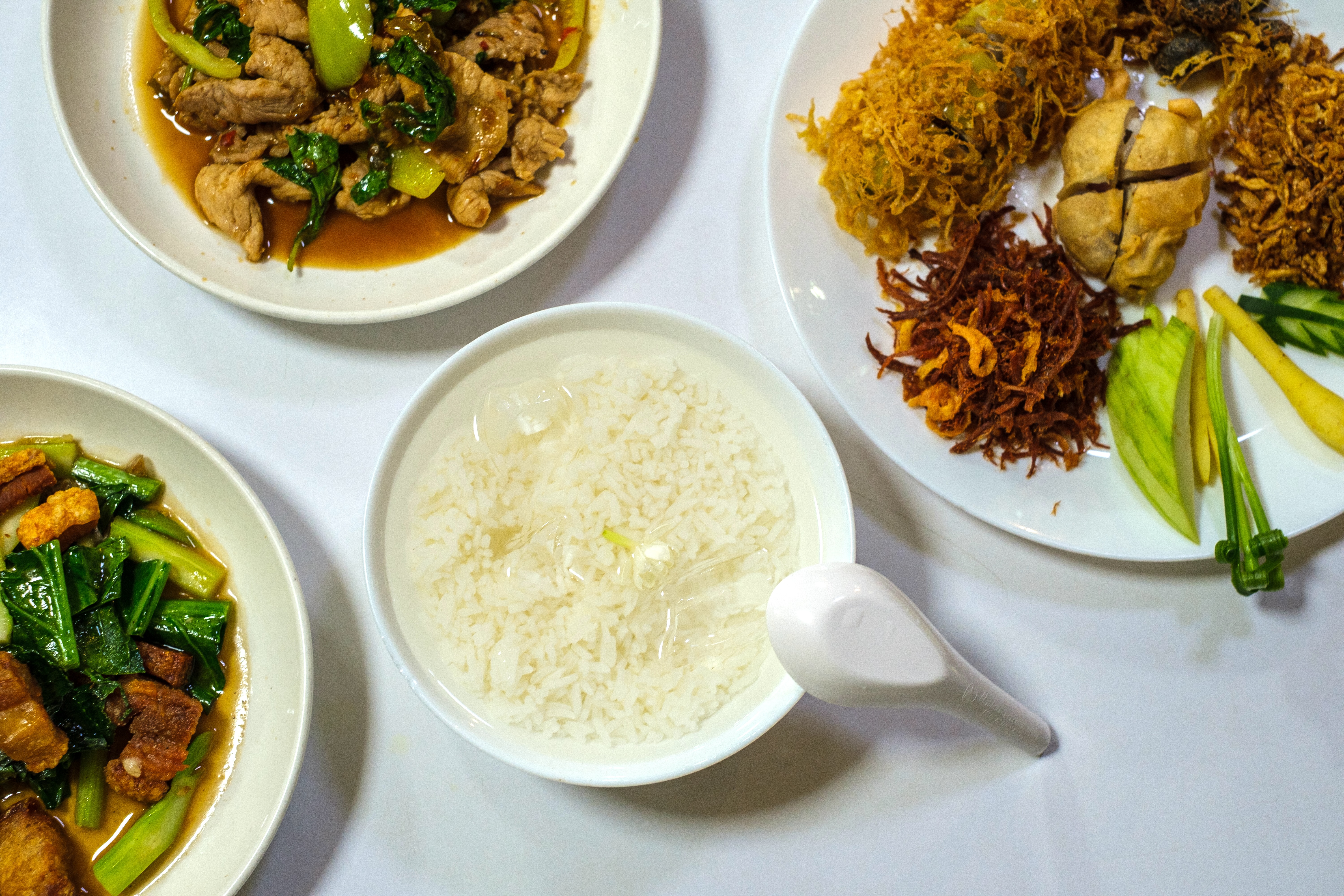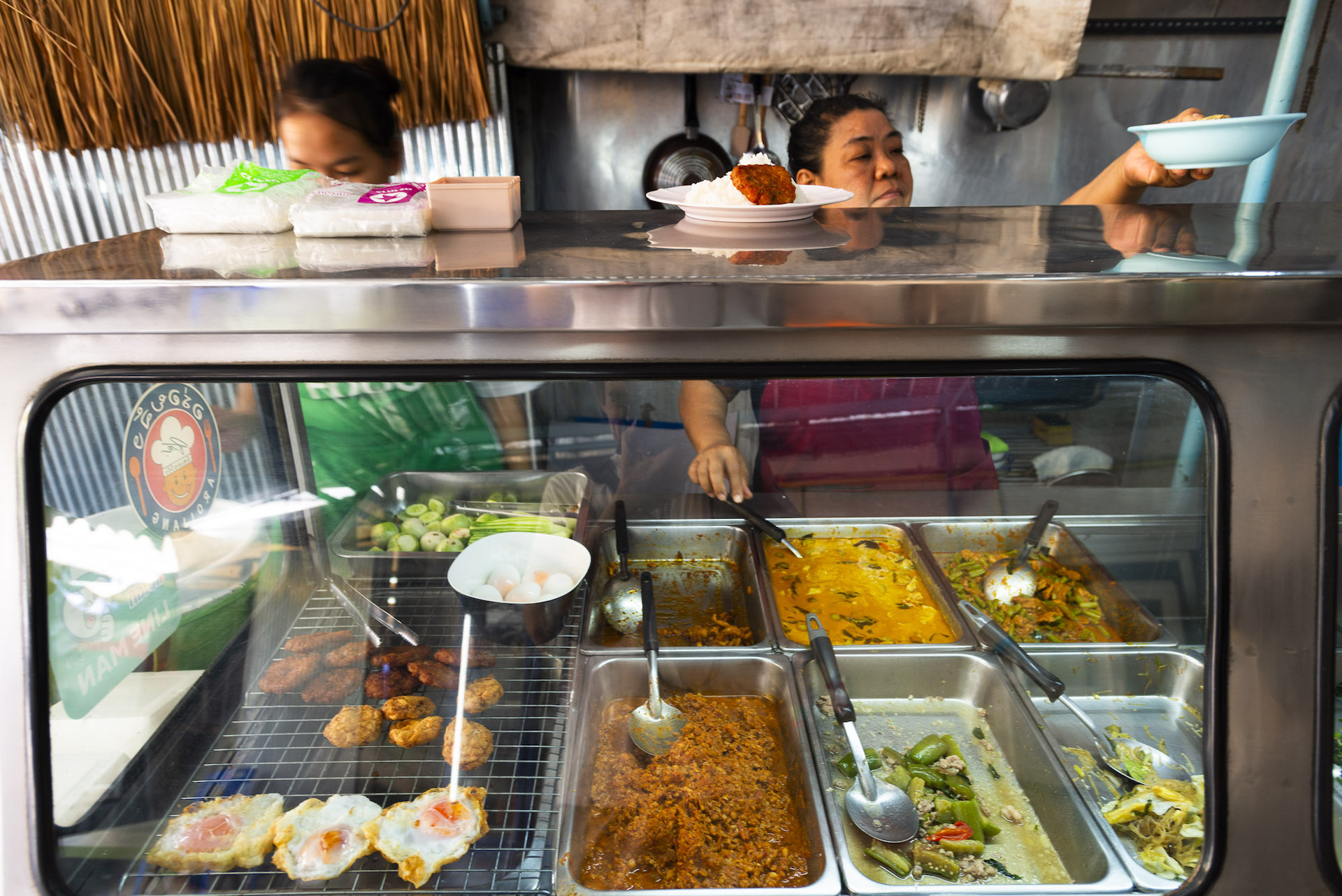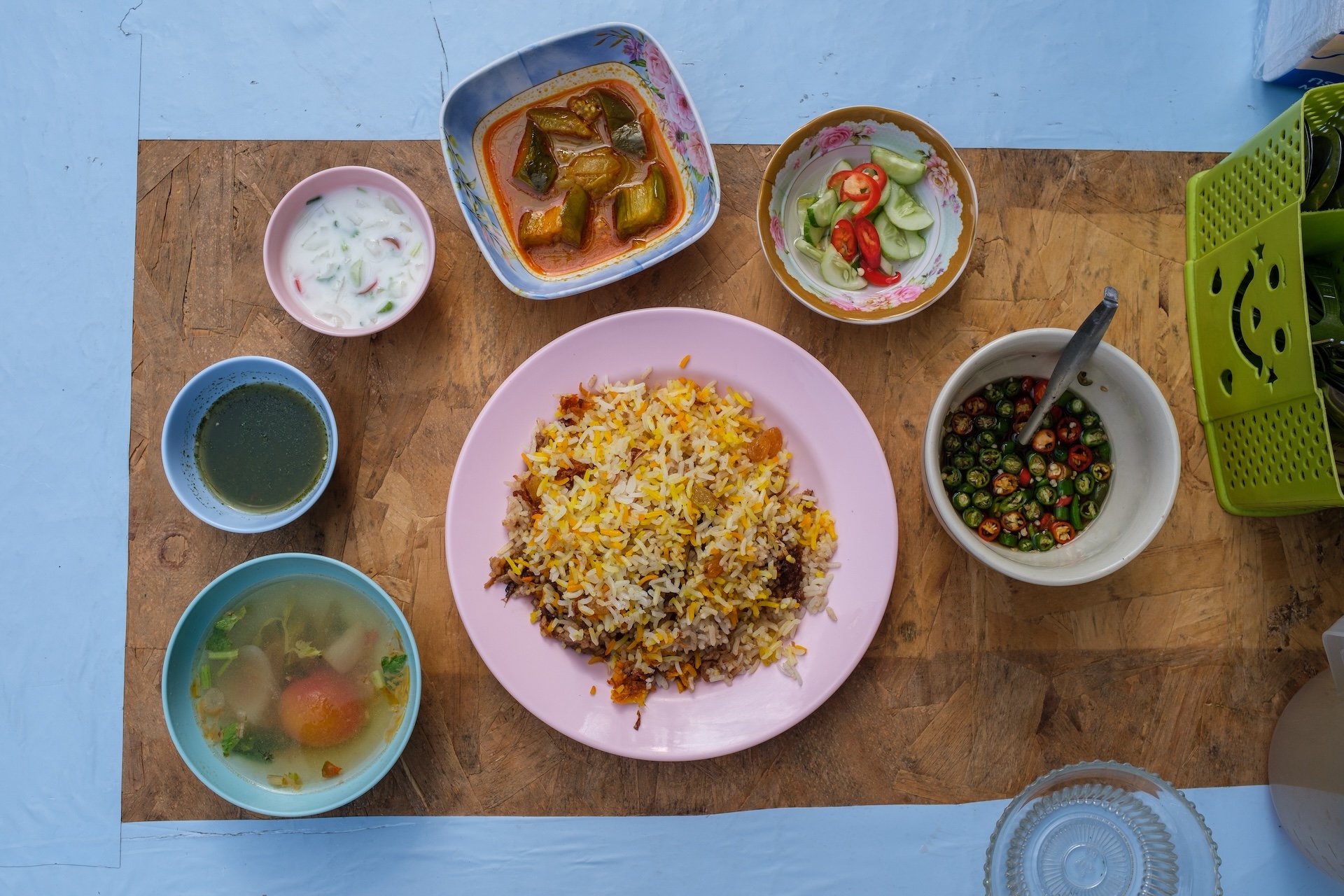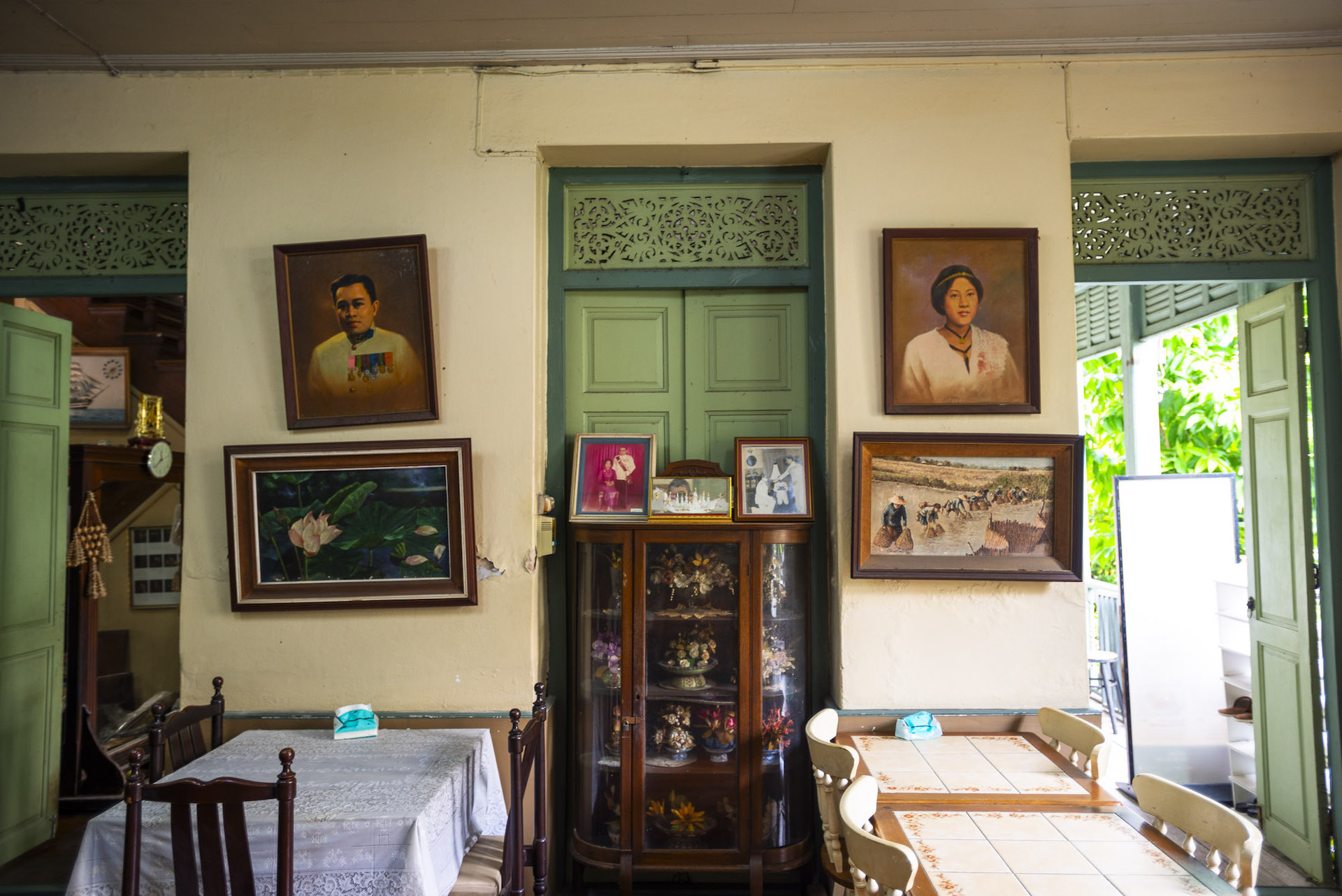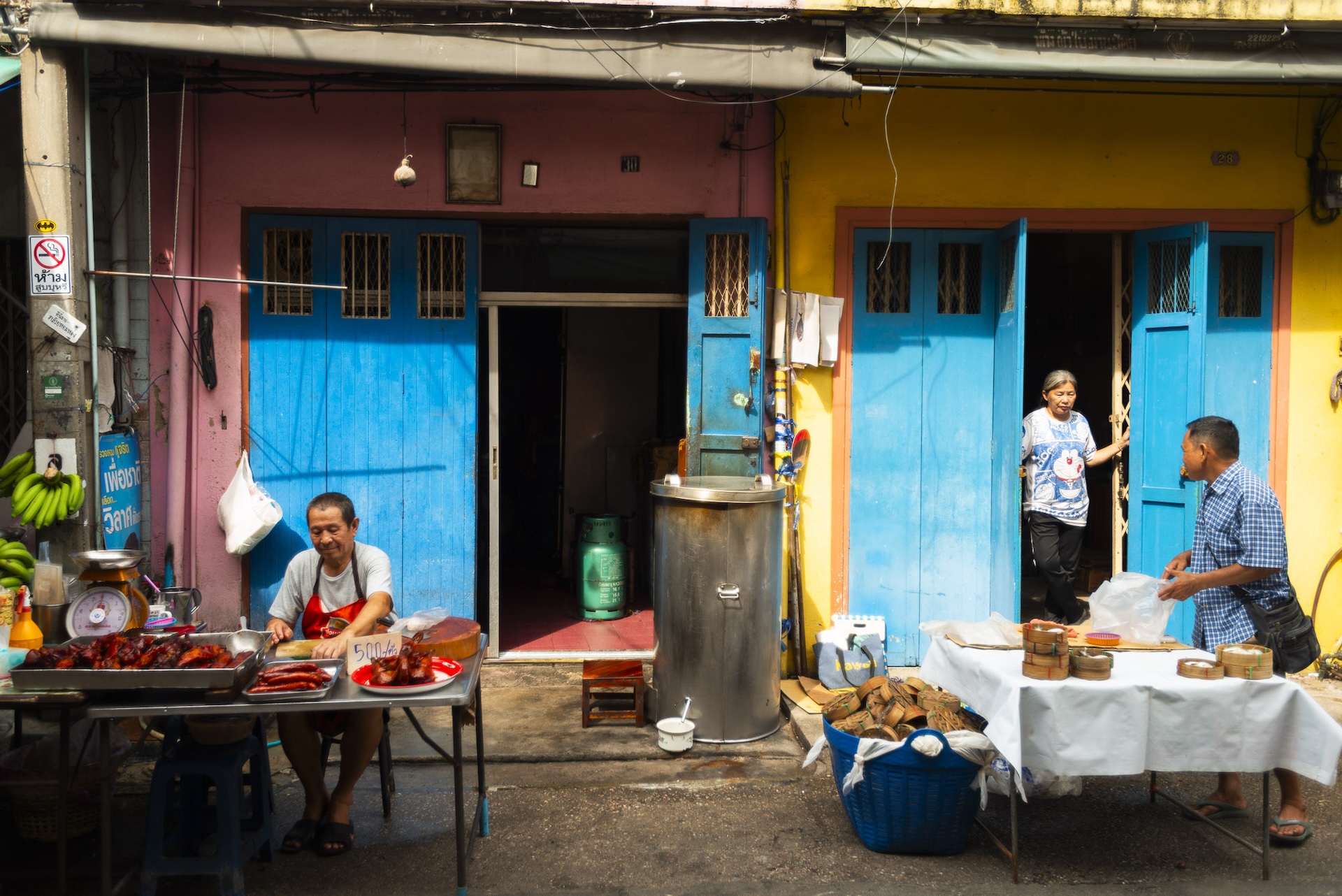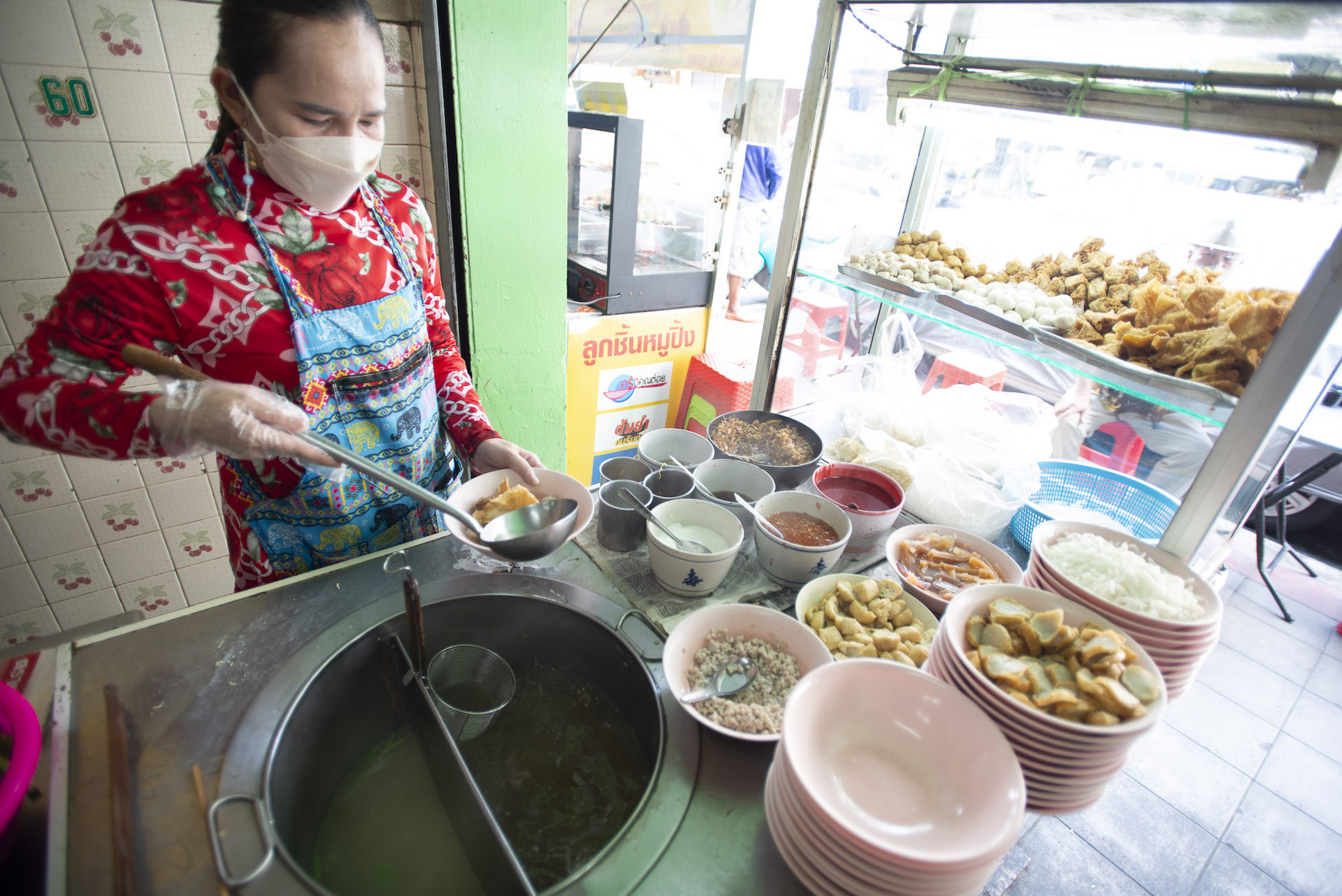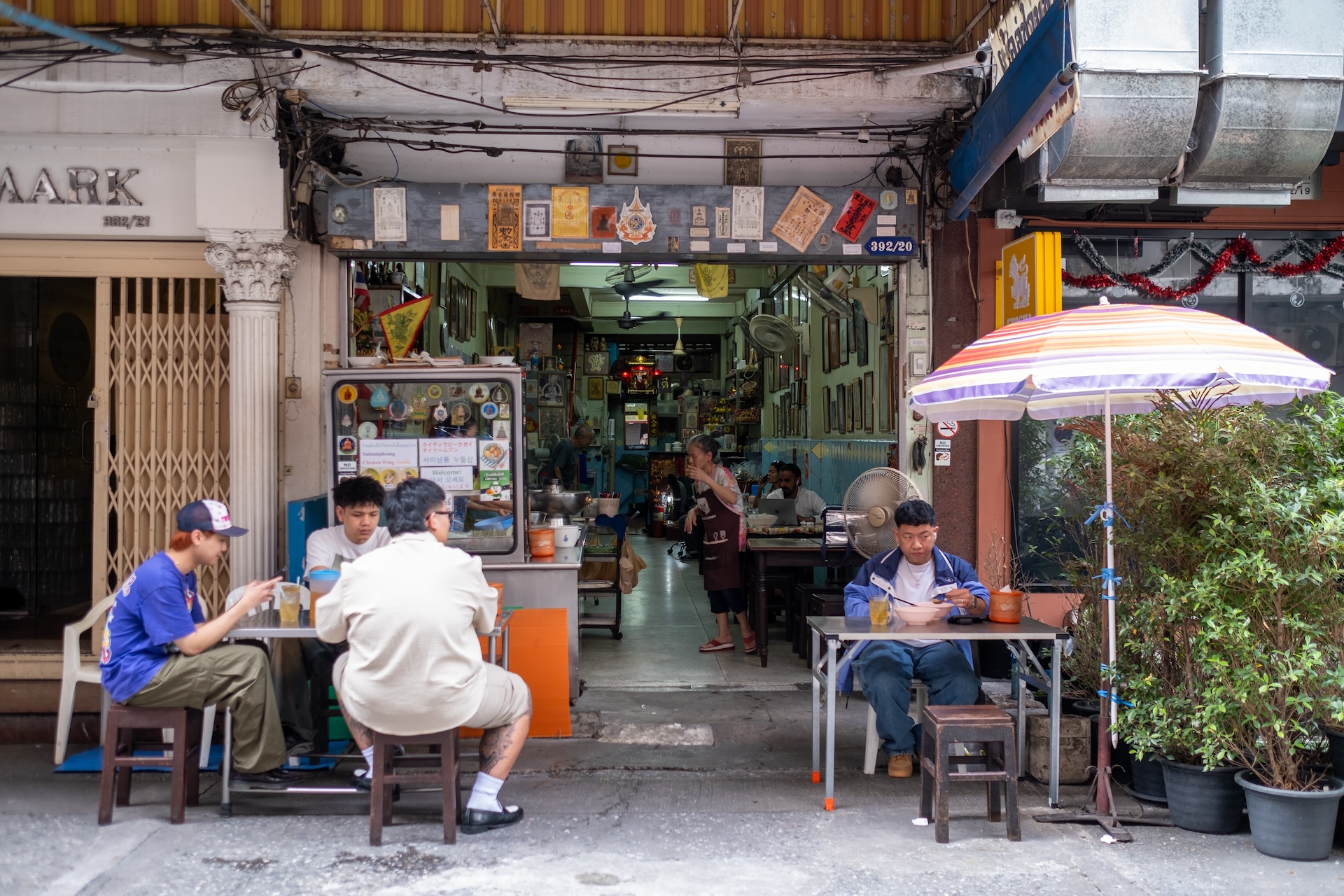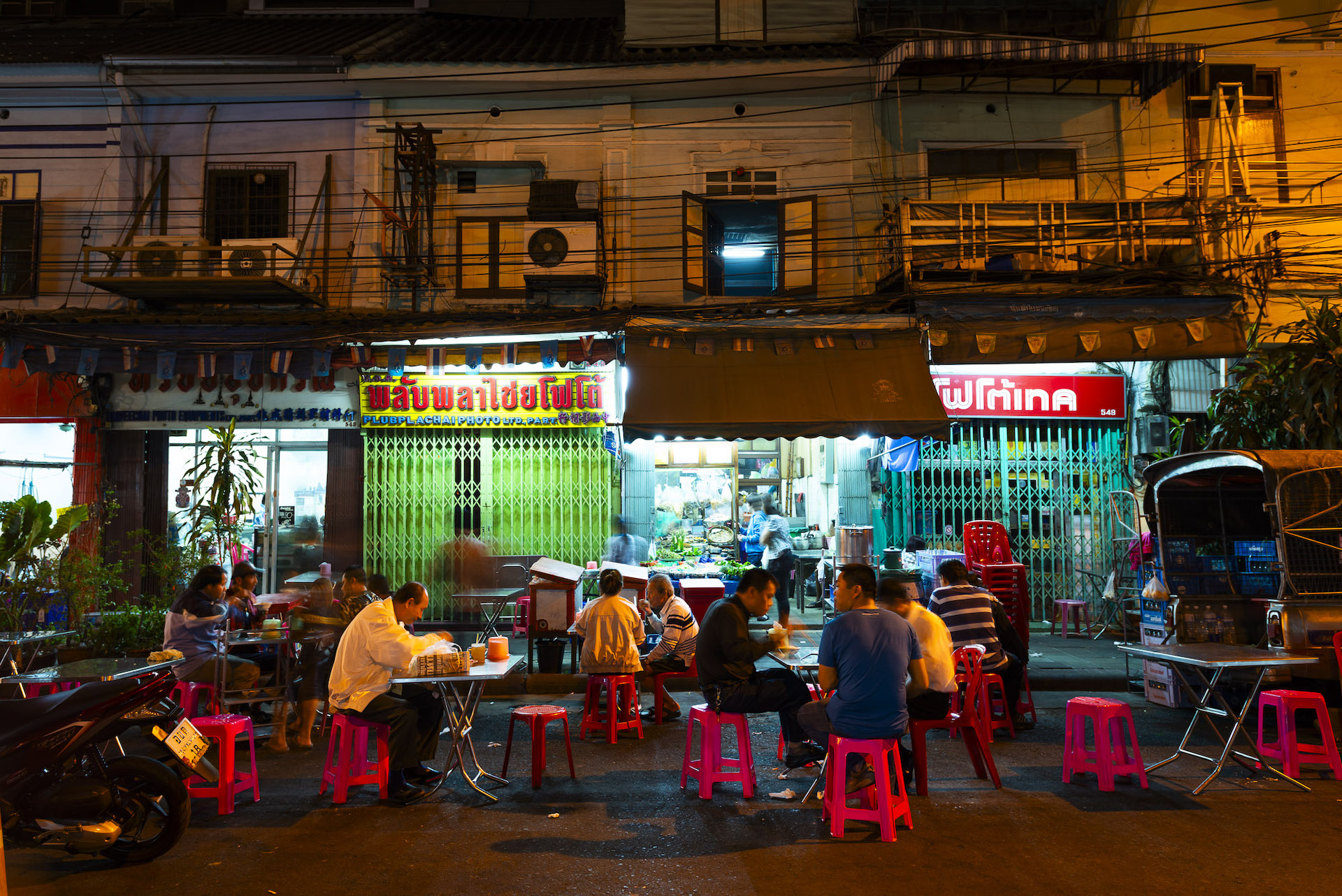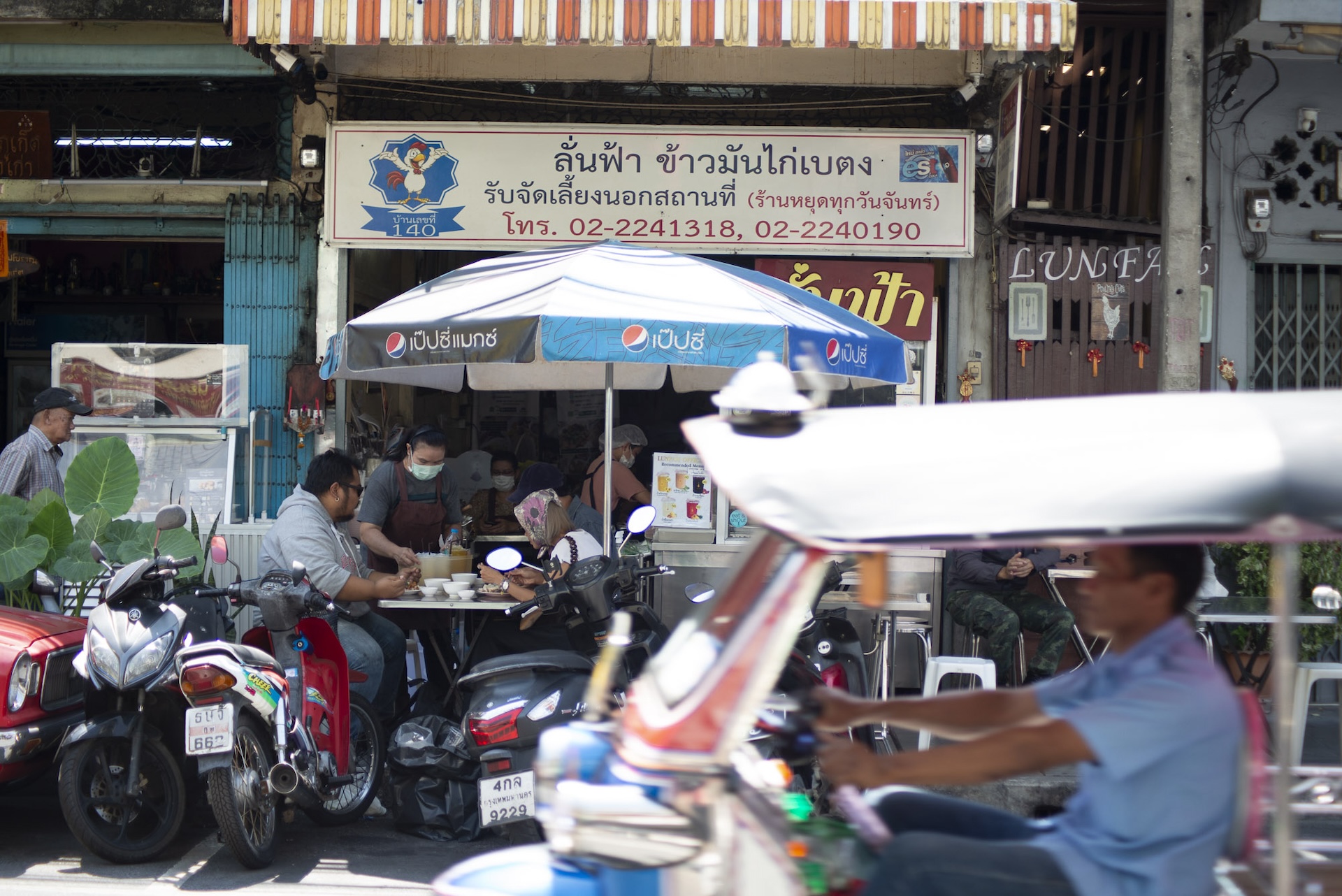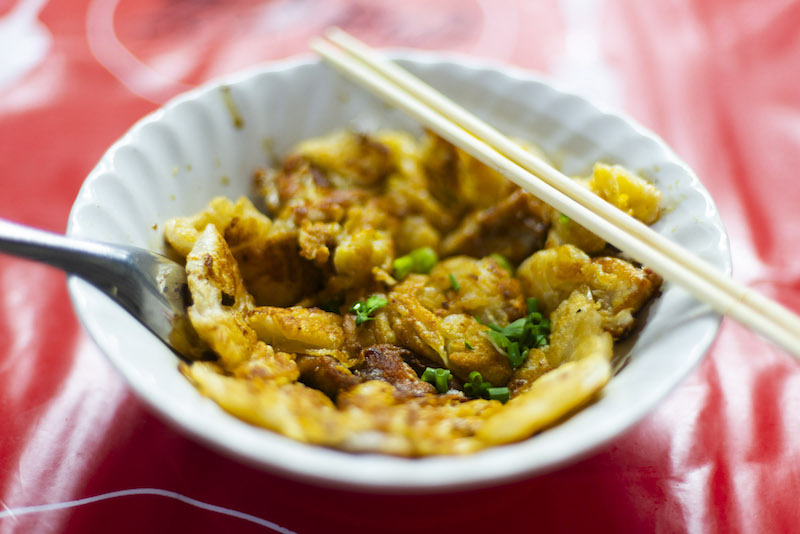We can't find the internet
Attempting to reconnect
Something went wrong!
Hang in there while we get back on track


Bangkok
Bangkok's culinary record
Look at Bangkok through the lens of Instagram, a travel article, or a listings website, and these days the city’s restaurant scene can appear to be all about Michelin stars. Yet look at Bangkok from ground level, and you’ll see a very different picture. The curry shacks, noodle stalls, legacy restaurants, and street vendors that have shaped the city’s dining scene for decades continue to put out some of the best value, casual, unselfconscious, full-flavored, delicious food on earth, all while blissfully unaware of a French tire manufacturer’s rating system. Michelin may have grabbed peoples’ attention, but this has added to, rather than taken away from, Bangkok’s food scene.
Get the Full Story →Tour Bangkok with Culinary Backstreets®
Upcoming Bangkok Food Tours
discover the city, street by street, bite by bite
Explore Bangkok
Bangkok
Recipe: Pad Kaprao, A Spicy Thai Stir-fry
Ask anyone who has been in Thailand for a while what its national dish is, and they will invariably say pad kaprao. People like to think of pad Thai or green curry or spicy lemongrass soup as ubiquitous dishes in Thailand, but it’s really this holy basil stir-fry that millions of Thais eat every day, all over the country. Pad kaprao – which is most often made with pork, beef, or chicken – is a ubiquitous sight on office workers’ desks at lunchtime, as an accompaniment to a cold mug of beer in the evening, and can even be spotted streetside for breakfast. Every aharn tham sung (“made to order”) vendor serves it, and such is its unique mix of garlicky heat with meaty umami that makes for a delicious dish nearly anywhere you try it.
Read moreBangkok
First Stop: Dylan Jones’s Bangkok
Editor’s note: In the latest installment of our recurring First Stop feature, we asked chef Dylan Jones about his favorite spot in Bangkok. Dylan opened Bangkok restaurant Bo.lan in 2009 with his partner, chef Duangporn “Bo” Songvisava. Bo.lan has become a Bangkok institution, receiving critical acclaim for its stance on sustainable practices while at the same time building an intricate web of connections through their suppliers, farmers, and local artisans. Dylan has completely immersed himself in his adopted homeland, speaking the language fluently and together with Bo, has amassed a unique collection of antique Thai recipes which they bring to life through their restaurants and various side projects.
Read moreBangkok
Neighborhoods to Visit: Thonburi, Bangkok’s Little Brother
Mention Thonburi to Bangkok people, and they’re likely to picture a distant, suburban – perhaps even rural – enclave. But the neighborhood is located just across the Chao Phraya River from Bangkok, imminently accessible via river-crossing ferries, bridges, and the Skytrain, and is home to a less-publicized yet visit-worthy, vibrant food scene. In particular, one Thonburi street, Thanon Tha Din Daeng, in the Khlong San area, is home to a huge variety of excellent legacy restaurants and stalls, not to mention a decent market, all of which can be visited on foot – a rarity in Bangkok.
Read moreBangkok
Sanguan Sri: Cool Down with Khao Chae
As the temperature soars in Bangkok, it means two things: the arrival of Songkran, the Thai New year in April, and the much-anticipated season of a unique dish known as khao chae. If you’ve never heard of it, you are not alone, as this distinctive dish often flies under the foodie radar, overshadowed by favorites like green curry and pad Thai. Available only for a couple of months each year, khao chae is known for its cooling properties during the hot summer months. This adored tradition is a visually beautiful dish consisting of delicate grains of rice soaked in a fragrant jasmine ice bath accompanied by a selection of meticulously prepared components. While it may not be universally adored (many Thais seem to have mixed feelings about it), khao chae has experienced a revival in recent years thanks to a younger generation of locals who want to reconnect with their roots.
Read moreBangkok
Khun-Yah Cuisine: Wat Traimit’s Real Hidden Treasure
It’s said that the massive gold Buddha statue at Bangkok temple Wat Traimit was once hidden away – its value concealed from an approaching army under a thick layer of plaster. It was only when workers were relocating it in the 1950s that the statue fell and the plaster exterior cracked, revealing a core of solid gold. If Wat Traimit has another hidden treasure, we’d argue that it’s Khun-Yah Cuisine. Enter one of Bangkok’s most visited temples and wind through tour buses and rows of tourists, guides, and Buddhist monks to the eastern edge of the compound; keep your eyes peeled, and you’ll see an almost garage-like space and a sign. This is Khun-Yah Cuisine.
Read moreBangkok
Amin Mutton & Chicken Biryani: Thai-Muslim Traditions
Bangkok’s bustiling energy is largely attributed to the endless latticework of diverse food found along street corners or tucked away in high rises – a unique culinary world reflects the city’s rich multicultural heritage. One street stall in particular, Amin Mutton & Chicken Biryani, embodies the soul of Bangkok’s Thai-Muslim community and carries nearly a century-old legacy. For generations, an iconic eatery simply named Muslim Restaurant served as a culinary institution, gathering local families, neighboring students, and the Muslim community around tables filled with humble dishes. Its closure in 2020 left a void in the community, but not long after, a few former staff members took it upon themselves to keep the legacy alive.
Read moreBangkok
Ban Wannakovit: Bangkok’s Culinary Time Capsule
Walk down a narrow, unmarked lane in Ko Ratanakosin, the artificial island that’s the birthplace of Bangkok, and keep your eyes peeled for a wooden, gingerbread-style mansion not far from the Democracy Monument – there is no sign here. If the gate is open, Ban Wannakovit is in operation. Walk past a traditional Thai spirit house to the front porch, which is lined with a few tables, or continue inside the house, where dining tables mingle with family portraits, antique furniture, and other heirlooms. If there’s any homier dining experience in Bangkok, we haven’t found it.
Read moreBangkok
Bangkok State of the Stomach
Look at Bangkok through the lens of Instagram, a travel article, or a listings website, and these days the city’s restaurant scene can appear to be all about Michelin stars. The brand swept into the city in 2017, and in a short time, chefs and diners alike became obsessed with collecting its celestial accolades. At press time, 35 Bangkok restaurants can claim at least one Michelin star – in 2024, one restaurant earned three – and the company continues to have a massive impact on the city’s dining scene. Yet look at Bangkok from ground level, and you’ll see a very different picture. The curry shacks, noodle stalls, legacy restaurants, and street vendors that have shaped the city’s dining scene for decades continue to put out some of the best value, casual, unselfconscious, full-flavored, delicious food on earth, all while blissfully unaware of a French tire manufacturer’s rating system. Michelin may have grabbed peoples’ attention, but this has added to, rather than taken away from, Bangkok’s food scene.
Read moreBangkok
Scenes from Our New Bangkok Tour: A Photo Essay
One of the most ubiquitous foreign cuisines in the US and abroad, the scope of Thai food served outside the country is largely limited to dishes from Bangkok and central Thailand. But many diners consider these dishes wholly Thai without being aware of the various influences that created them. In fact, “Thai food” is a misnomer; the country’s food takes the form of regional cuisines from north to south. On our culinary walk of Bangkok, we explore Ko Ratanakosin, the artificial island that’s the birthplace of Thailand.
Read moreBangkok
Chawadee Nulkhair’s Seven Favorite Bangkok Food Stalls
The food scene in Bangkok is constantly in flux, making it one of the most challenging cities in the world for a restaurateur to navigate. But it’s heaven for food lovers. And one of the things that is a constant when it comes to the Bangkok dining scene is its street food. In spite of government attempts to curtail vendor activity, a plethora of roadside offerings can still be found – provided you know where to go. Sidewalk stalls hawking noodles, fried chicken, and Thai-Muslim chicken biryani throng certain sections of Silom Road, while famous shophouse vendors that have been selling braised pork trotter on rice and duck noodles for generations can be found on quiet side streets like Soi St Louis, in the shadow of the central business district.
Read moreBangkok
Pad Thai and Beyond: Nine of Our Favorite Meals in Bangkok
The vast majority of the food in Bangkok is, without a doubt, Thai. But peek under the hood and you’ll find ingredients, cooking techniques, and dishes that can be traced back to places far beyond Thailand. Influences brought by Chinese immigrants – namely Hokkien, Hakka, and Teochew people – have done the most to shape food in Bangkok. Immigration from the Muslim world has also had a massive impact on the city’s cuisine. And even contact with Europeans has come to shape Thai food. The result of all this is the fascinating, delicious jumble of ingredients, cooking techniques, dishes, and influences that today we recognize as Thai food.
Read moreBangkok
Introducing Bangkok: Through the Eyes of Our Local Team
To properly introduce Bangkok, CB’s newest location, we turned to Austin Bush, who helped design our Bangkok culinary walk. An American photographer and writer (who frequently writes about Lisbon, his current home base), Austin previously lived in Bangkok for more than 20 years, from where he contributed to just about every major food and travel publication, as well as to more than 40 guidebooks for Lonely Planet. In 2018, he wrote and photographed the James Beard Award finalist, The Food of Northern Thailand. Its successor, The Food of Southern Thailand, was released in 2024. Here, Austin shares some of the ins and outs of dining in Bangkok, his visions for the new CB tour, and what makes the bustling Thai capital so great for exploring – and eating.
Read moreBangkok
Kuaytiaw Khua Kai: Bangkok's Best Fried Wide Noodles
Kuaytiaw khua kai, wide rice noodles fried in a wok with marinated chicken, preserved squid, and eggs, is a dish with undeniably Chinese elements, but is quite possibly one that was invented in Thailand – most likely in Bangkok’s Chinatown. In and around the Phlap Phla Chai Intersection, no fewer than five restaurants and stalls serve the dish, but our favorite is without a doubt Suan Mali Chicken Noodle. The vendors here fry the dish the old-school way, over coals, in lard, finishing by flipping the knot of noodles flapjack-style, resulting in a dish with ample singed bits and a whiff of smoke.
Read moreDaily Dispatches from the Frontlines of Bangkok
Latest Stories: Bangkok

Get Your Free Bangkok Pocket Guide
Introducing our pocket-sized Bangkok guide — perfect for your next culinary adventure. Yours free when you sign up for our newsletter.
Get Your Free Bangkok Pocket Guide
Introducing our pocket-sized Bangkok guide — perfect for your next culinary adventure. Yours free when you sign up for our newsletter.
Culinary Backstreets® Envoys, Always Searching for the Next Hidden Gem
Meet Our Bangkok Team

Lek
Bangkok Tour Leader

Austin
Bangkok Correspondent

Annie
Bangkok Tour Leader

Chawadee
Bangkok Correspondent

Megan
Bangkok Correspondent

Thomas
Bangkok Photographer
Your Questions, Answered
Thailand’s capital, Bangkok (called “Krung Thep” by locals), sits in the central region of the country. Once a small trading village, Bangkok has evolved into a cosmopolitan metropolis, with a location on the Chao Phraya River close to the Gulf of Thailand influencing its economic development and cultural diversity. Bangkok’s greater metro area is now home to around 17.5 million people, almost 25% of the country.
Alive with history, spirituality, grand architecture, and urban appeal – not to mention the incredible street food – there is an endless number of things to do in Bangkok. Roam through ornate shrines and historic temples like the famous Wat Pho and Wat Arun, take in the street life at a local market and sample food from all over East and Southeast Asia. Indulge in a traditional Thai massage or snag a seat at a Muay Thai boxing match. And then don’t forget about the vibrant nightlife – rooftop bars with glittery views, night markets teeming with food and drink. The city’s dining scene has much to offer, and we’ll be chronicling it here. Bangkok also makes a great launch pad for trips across Southeast Asia, including the lush mountains of the north and the beautiful beaches of the south.
The best time to visit Bangkok is during its “cool season” from November to February. That’s when there is less rain and humidity and the weather is (relatively) cooler, making it more comfortable for outdoor activities and sightseeing. It also overlaps with the festive season, including the Loy Krathong (lantern) festival in November, New Year’s Eve, and the Lunar New Year.
Generally, the climate in Bangkok is hot and humid. During the ideal travel months from November to February, the weather is warm and pleasant, with temperatures ranging from 70 F to 90 F. Bangkok’s rainy reason runs from approximately July to October; daily downpours can cause flooding. If there’s any time of year to plan carefully around, it’s Bangkok’s hot season, which spans from March to May, during which high temperatures and humidity can make it difficult to get around.
When compared to many major cities in the world, especially in Europe or the US, Bangkok is fairly cheap. The average price of a 3-star hotel in Bangkok can be anywhere from $50-100. A cup of coffee costs $1-3, a pint of beer about $2, and a sit-down dinner can run about $10-20 or more. Street food meals are much lower, from $3-8. Taxis, tuk-tuks, and public transportation are also relatively inexpensive.
Compared to other cities of its size, Bangkok is a safe city for tourists. Violent crime is rare, and locals are known for their hospitality. However, it’s always wise to be cautious and research typical scams in tourist areas, especially those involving tailor or jewelry shops.
Currently, there are no mask mandates or specific COVID-19 mandates in place in Bangkok.
From street after street of food stalls and markets to beautifully designed contemporary restaurants, Bangkok offers dining experiences to suit all tastes and budgets. Many visitors to Bangkok come looking for Pad Thai (phat Thai) and other popular dishes like tom yum goong (spicy shrimp soup), som tum (papaya salad), Thai curries, and mango sticky rice. But we’ve got the lowdown on the best dishes in the city, from Hakka Chinese-influenced yen ta fo (rice noodle and fish ball soup) to Thai-Muslim rice biryani.
American citizens can travel to Thailand for up to 30 days without a visa.
Bangkok’s dining scene is too diverse to name a best restaurant, with our favorite meals ranging from street food to high-end spots. Read through our piece on our favorite local dishes and food stalls for Bangkok food tips. But for a truly unique experience, Ban Wannakovit offers old-school dishes you won’t find anywhere else inside a restored 20th-century Ratanakosin-style home.
While Khao San Road is notorious for backpackers and party-goers, the Riverside is known for its glamorous hotels and river views. For a more modern and cosmopolitan experience, book a spot in Sukhumvit or Silom, which are both well-connected to public transport. Then there’s Chinatown, one of the oldest areas in Bangkok.
You can fly directly to Bangkok from many locations worldwide, either into the newer Suvarnabhumi International Airport (BKK) or Don Mueang International Airport (DMK). To get to downtown Bangkok, it is best to fly into BKK and take the Airport Rail Link to connect to the city’s BTS Skytrain or MRT Subway.
The closest beaches to Bangkok are Pattaya and Hua Hin. You can get to Pattaya in about 2 hours by car or 2.5 hours by bus, and Hua Hin in about 3-4 hours by car or bus, and 4 hours on the train (our preferred method). For more dramatic beach scapes and tropical vibes, take a plane south to any of Thailand’s famously beautiful islands. If you’re looking for an island getaway without venturing too far, check out Ko Samet, Bangkok’s closest island.
Bangkok is a city full of life and flavor, though it can be challenging to navigate with young children due to its busy streets and lack of sidewalks in some areas. The crowds and heat can also be overwhelming for little ones. If you’re traveling with kids, consider arriving in the cool season and staying in areas like Sukhumvit, which has parks and more stroller-friendly sidewalks. It’s best to avoid nightlife areas like Khao San Road and Soi Cowboy, as they can get noisy and crowded late into the night.

